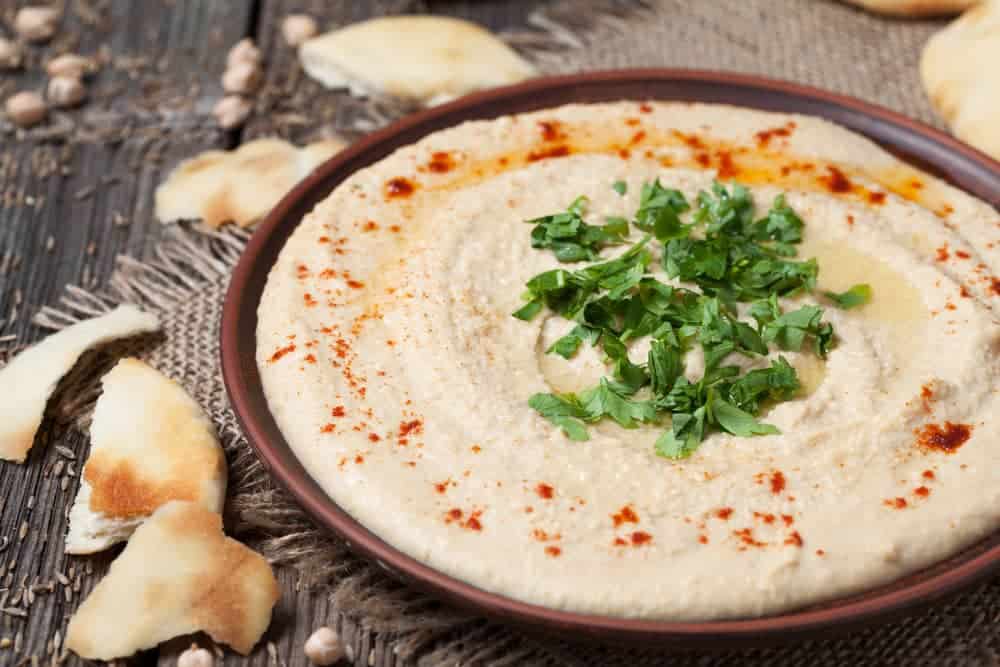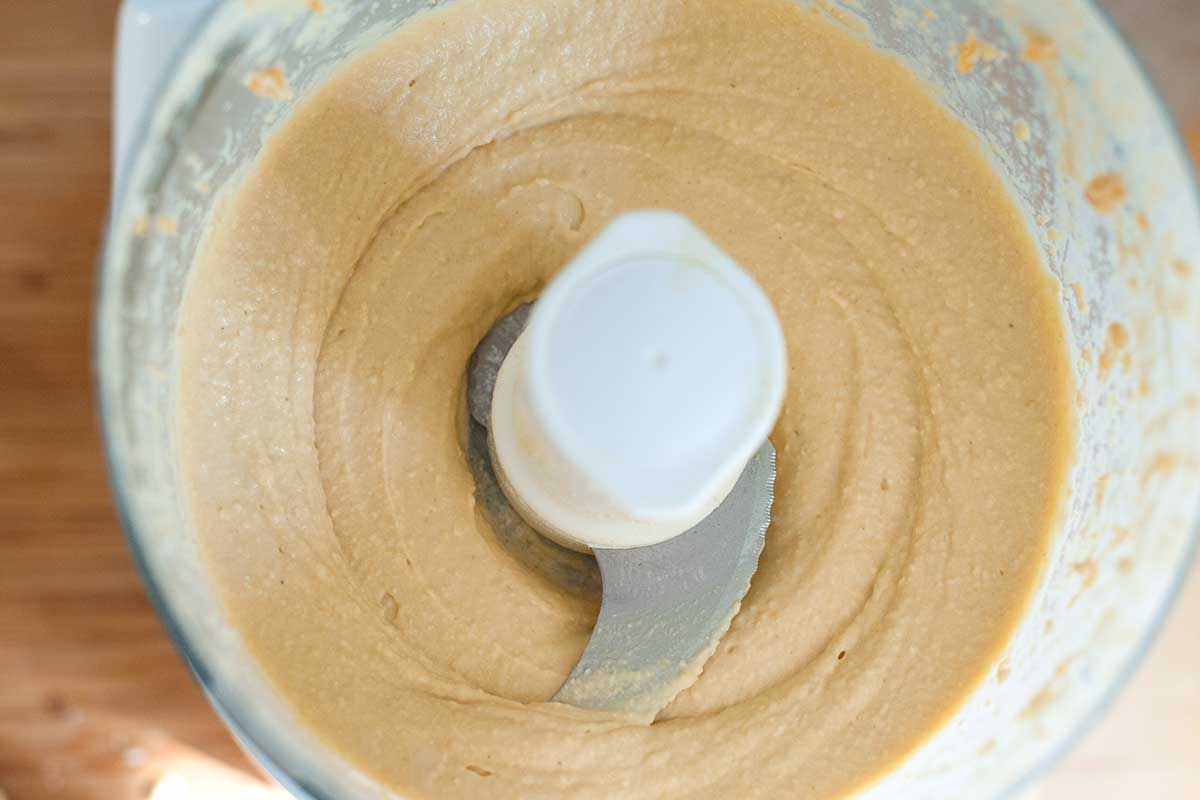My favorite hummus recipe! With a few simple tricks, you can make creamy, smooth homemade hummus, and yes, it’s better than store-bought.
Want the dreamiest, smoothest hummus ever? The secret isn’t fancy ingredients—it’s all in the order! First, whip up tahini and lemon juice in your food processor for a fluffy, creamy base. Then, blend in the rest of the ingredients. You won’t believe how light it gets—check out our video to see for yourself!
This recipe is a keeper—our family’s been making it for years! So many readers swear it’s their FOREVER hummus recipe. If you love amazing flavor and super-smooth hummus, you’ve got to try this.
Hummus is a delicious spread or dip made from chickpeas, tahini, lemon, and spices. It is a popular dish in the Middle East and the Mediterranean. You can find store-bought versions in the United States, but you should skip those and make your own. Let me show you how.
In addition to the ingredients above, you can customize your hummus with even more flavor! I love blending in roasted red peppers for red pepper hummus, but olives, pine nuts, roasted garlic, and extra spices are also great options. You can also add ingredients to the top of hummus, like in this spiced beef and feta hummus. And while it isn’t hummus, baba ganoush is similar, but swaps chickpeas for roasted eggplant.
Does hummus need tahini? You bet! In fact, tahini is one of hummus’ main ingredients, along with chickpeas and olive oil. That’s why our favorite dip can be so rich and delicious—in hummus, tahini adds smoothness to the texture, as well as a wide variety of vitamins and minerals.

Can I Make Hummus Without Tahini?
There are two camps in the hummus-loving world. Some love tahini’s zesty, tangy flavor, while others can go without it.
We like it both ways, but for the best hummus, which rivals our favorite brands in the store, use tahini.
For hummus without tahini, simply leave it out. A chickpea puree without it is still quite delicious. Just add more olive oil. Another option is to use natural, unsweetened, creamy peanut butter in its place.
Aquafaba is the starchy liquid found in a can of chickpeas or the leftover liquid from cooking dried chickpeas. This magical ingredient has many uses (learn more in our deep dive here)!
Aquafaba for fluffy hummus: Instead of plain water, add a splash of aquafaba at the end of making hummus. As it whips, it creates an incredibly light and airy texture. (Note: Taste your aquafaba first. If it’s too salty, use less salt when making your hummus.)
One More Secret to the Best Hummus
Add a splash of cold water or aquafaba (chickpea liquid) at the very end. Pour it in while your food processor is running, and watch as it transforms into fluffy, creamy, whipped hummus.
I use cold water in the video, but aquafaba works incredibly well, too. Some of our readers have also suggested using ice cubes instead of the water.

What is Tahini and how do you use it? – The Middle Eastern Pantry
FAQ
What is the purpose of tahini?
What can replace tahini in hummus?
Does hummus have to contain tahini?
What happens if you put too much tahini in hummus?
Can you use tahini in hummus?
Tahini is most widely used as the main ingredient (behind chickpeas) in traditional hummus, giving a notable and appealing nutty flavor to this Middle Eastern staple. You can also add a spoonful to pureed carrots or beets for a vegetable hummus that is lovely to look at and tastes great — an excellent option for a party appetizer.
Is hummus good for health?
Yes, due to its high fiber content it can keep your digestive tract regular. It can even help to improve your bone, muscle, skin and blood health. It is even high source of protein as protein is an essential building block in bone, muscle and skin. It can helps in lowering the cholesterol and even helps in preventing cancer. It can even help in loosening your weight.
Does tahini lead to superior hummus?
It’s all about the tahini baby. Thus, a superior tahini will lead to a superior hummus. Get the good stuff if ya can! Tahini is a smooth paste traditionally made of hulled sesame seeds. Or you can use non-hulled sesame seeds which is black tahini and make black hummus! If you have a food processor, now is the time to use it!
What can you do with tahini?
Whip up a batch and toss it with grains and chopped carrots for a colorful salad, blend it with cooked chickpeas for a quick sandwich filling, or spoon it over blanched kale or broccoli florets set on a bed of brown rice for dinner. Tahini belongs in your dips and hummus, yes, but also your soups, salads, cookies, brownies, and veggie burgers.
